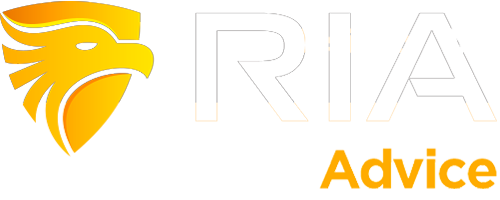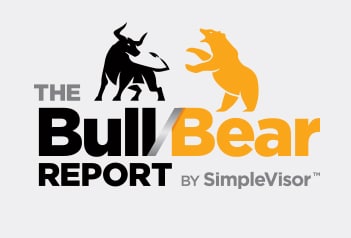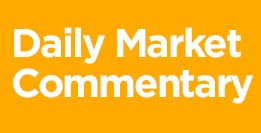With the passage of the SECURE ACT and the death of the STRETCH IRA there has been a lot of noise about Health Savings Accounts or HSA’s for short. The role, or lack of, that people use a Health Savings Account as investment vehicles in their financial plans has been highly debatable, but not anymore. In 2020, we are finally seeing a shift in financial advice to find ways to put funds aside and avoid taxes altogether down the road.
Health Savings Accounts are becoming common place now that employers are shifting more of the burden of Health Insurance to the employees with the use of high deductible health plans. If you don’t have access to one now, those days may be numbered.
With all of the attention HSA’s have been given; there has been an enormous amount of “advice” on how you should use these accounts. Let’s take a look at what your advisor probably isn’t telling you:
Your broker confuses an HSA and FSA.
Not everyone is eligible for a Health Savings Account, to have access to an HSA you must be in a High-Deductible Health Plan. This means your out of pocket deductibles must be at minimum $1,400 and your max out of pocket can be no greater than $6,900 for a single insured and for a family the minimum deductible can be no less than $2,800 and maximum out of pocket expenses can be no greater than $13,800 for a family in 2020.
If your health insurance plan meets those parameters you can contribute to a Health Savings Account.
The annual 2020 contribution limit, (employer+employee) is $3,550 for a single insured and $7,100 for a family. If you’re over 55 you’re allowed an additional $1,000 catch up contribution annually.
Most employers who have high deductible health plans are beginning to start HSA’s for their employees. However, if you’re not satisfied with your company’s plan or they don’t offer one you can certainly shop around for your own HSA. Keep in mind if your company offers a plan and makes contributions to your account it would be wise to use your employer’s plan. A study from the Employee Benefit Research Group found that in 2015 employers who contributed averaged an annual contribution of $948. Other more recent studies show the employer contributions typically varies by the size of the company, but varying between $750 and $1250.
When doing your own shopping, remember to check costs, ease of use and investment options available.
Flexible Spending Accounts are much different from HAS’s. They are offered through an employer-established benefit plan. Unlike the HSA if you are self-employed, you aren’t eligible for an FSA. A Flexible Spending Account will allow participants to put up to $2,750 annually in their account. FSA’s also provide you the ability to access funds throughout the year for qualified medical expenses even if you haven’t contributed them to the account yet.
Some Key differences:
- HSA’s will allow you to retain all of your funds in the account each year-even if you don’t use them.
- An FSA may allow for a rollover of unused funds of up to $500, but only if your company agrees to it and anything remaining over the $500 will go back to the company’s coffers.
- The HSA’s ability to make tax free contributions, allow the funds to grow tax free year after year and then make tax free withdrawals when used for medical expenses make this a great tool to utilize as part of diversifying the type of accounts in your financial plan.
- The HSA also allows employees to retain their funds long after their employment.
- Contributions to an HSA should stop permanently 6 months prior to starting Medicare. Medicare enrollment can be delayed past 65 if you’re still covered under an employer plan, but one should be familiar with the system and potential penalties if not enrolled properly and on time.
- Once on Medicare you can use your HSA to pay premiums, meet deductibles and cover other qualified medical expenses.

Your broker doesn’t care about the trend in health care costs
As discussed in our RIA Financial Guardrails, the cost of health care is growing twice as fast as the typical Cost of Living Adjustment in Social Security benefits.
Healthview Services put’s out an annual report on the trends and costs of health care. In their 2018 Retirement Healthcare Costs Data Report they found that health care expenses are projected to rise at an annual rate of 4.22%. The report also found that the average healthy 65 year old couple who is retiring this year should expect to spend $363,946 in today’s dollars in health care premiums, deductibles and out-of-pocket expenses.
These are scary numbers if you ask me. Is your advisor using standard income replacement ratios of the past or are they updating their numbers annually or is this even a consideration in your overall financial plan?
In your financial plan what is your health care expense and at what % is it inflated each year?
Time and time again financial plans use unrealistic return numbers, little or no inflation and health care considerations have been either missed or an altogether after-thought.
If you don’t know-ask your advisor what type of assumption’s they are using. This should be an easy conversation to have and if it’s a conversation you don’t feel comfortable having with your advisor it may be time to start kicking tires.
Your advisor’s job is to be your advocate and more importantly in financial planning to play devil’s advocate.
Fund your HSA over your 401(k)
Now this one tends to scare the bejesus out of people, but hear me out. According to a 2018 Economic News Release by the Bureau of Labor Statistics the median number of years an employee stays at one job is 4.2 years. Now that number is even smaller (2.8 years) if you’re between the ages of 25-34. The trend that people are spending less time at one employer is probably why we have seen an increase in vesting schedules for employer matching contributions or an all-out stop in employer matches.
The U.S. Bureau of Labor Statistics 2019 National Compensation study shows that of the only 64% of employers who offer a 401k plan and on average 74% take advantage of those plans. Out of the 64% who do offer a plan around half of them don’t even offer a match. As labor markets continue to tighten hopefully we’ll see employers begin to sweeten the pot on 401(k) plans as they try to retain and entice talented workers.
Now if you’re lucky enough to get that illusive bonus of a match you must think about your company’s vesting schedule.
Companies matching contributions are vested a couple of different ways: Immediately, a cliff vesting schedule or graded vesting schedule.
- An immediate schedule works just like it sounds once your funds are matched in your 401k the employer contribution is 100% vested. I think of that as a unicorn in this day and age, those good companies are few and far between.
- A cliff schedule means that once you have worked at an employer for a specified period of time (think years) you will be 100% vested in their contributions. When using a cliff schedule by Federal law the company must transfer their match to you by the end of year 3.
- A graded schedule will vest employer contributions gradually. In many cases we see the magic number of 20% per year, but employers can’t take that any longer the six years before you are fully vested.
Why is this important? With so many people on the move looking for employment opportunities you must be mindful of your expected time with a company to make the most of any match. As people spend less time at one employer one must consider the length of how long you may continue your employment in regard to your vesting schedule. This will certainly play a factor in determining if funding an HSA prior to your 401k makes sense for you.
When funding an HSA you get to utilize a TRIPLE TAX ADVANTAGE:
- Employee contributions are tax deductible,
- Interest is allowed to grow tax free; and,
- You can pull the funds out for qualified medical expenses at no tax!
This is extremely powerful and is one reason why there is so much buzz around these accounts.
NO TAX GOING IN, NO TAX ON YOUR EARNINGS AND IF YOU USE IT PROPERLY YOU WON’T BE TAXED ON THE WAY OUT!

In a traditional 401k plan your contributions are put in pretax, funds grow tax deferred and THEN your distributions are taxed when you begin to use them.
As health care expenses become a larger part of our spending in retirement it only makes sense to use an HSA to your family’s advantage.
Medicare and Cobra Payments
Unlike most other accounts utilized for retirement or health care you can use your HSA funds for not only your day to day qualified medical expenses, but also your Medicare and Cobra premiums without incurring taxes or a penalty. The ability to use the funds to pay premiums is a great benefit that is often overlooked.
As referenced earlier in our RIA Financial Guardrails. Per Medicare Trustees as reported by Savvy Medicare, a training program for financial planners, Part B and Part D insurance costs have averaged an annual increase of 5.6% and 7.7% respectively, over the last 5 years and are expected to grow by 6.9% and 10.6% over the next five years.
As inflationary pressure has been weighing on Medicare premiums and expectations for increasing costs to continue now may be a great time to start saving in your HSA.

How to invest your HSA properly
This is one of those things that when I open my computer and see article after article on how to invest aggressively in your Health Savings Accounts it makes me want to bang my head against a wall.
Let’s get this straight, an HSA has the ability to be a powerful investment vehicle with the triple tax-free benefits when used the right way. However, just like with any good financial plan you need to start by having a cushion of emergency funds. This cushion will look different for everyone, but we would recommend having at minimum 2 years of deductibles and premiums saved in a very low risk allocation before you started dipping your toes in the markets with these funds. Life has a way of slapping you upside the head from time to time, just as markets do. When life takes you for a ride we want you to be ready to access your hard earned funds should you need to use them in a medical emergency without regard for asset prices.
Do you pay top dollar for your houses, real estate or a business venture? Or are you looking for a deal? No one wants to buy anything only to have to turn around and sell it later for a loss.
Valuations are high- Not just a little bit high, but near all time. If we look at Shiller’s CAPE-10 Valuation Measures & Forward Returns we can see that current valuation levels are above what we have seen at every previous bull market.
I’m not saying we’re headed into our next recession; the momentum of this market could continue to carry on for some time. Like any other investment thoughtful allocations need to be made in late stage market cycles-especially in an account such as an HSA where you may need the funds sooner rather than later.
There is no one size fits all in the use of a Health Savings Account, but if you use these tips as a template and factor your HSA into your financial plan you’ll be well on your way to success in retirement.

Customer Relationship Summary (Form CRS)
Also Read



















